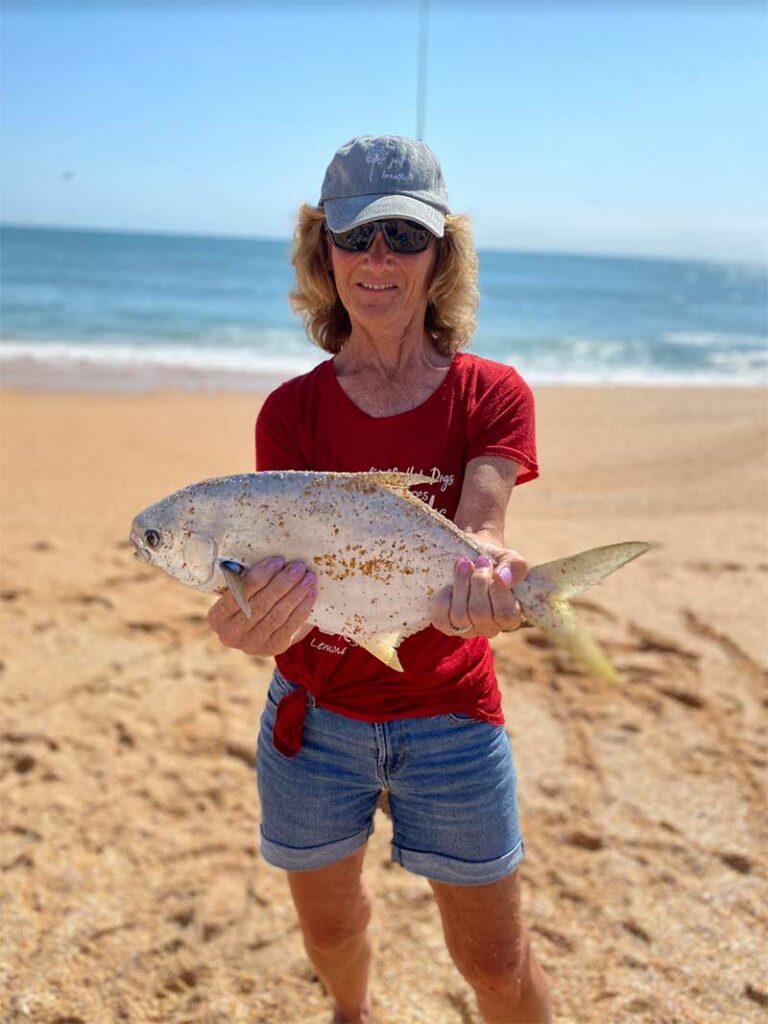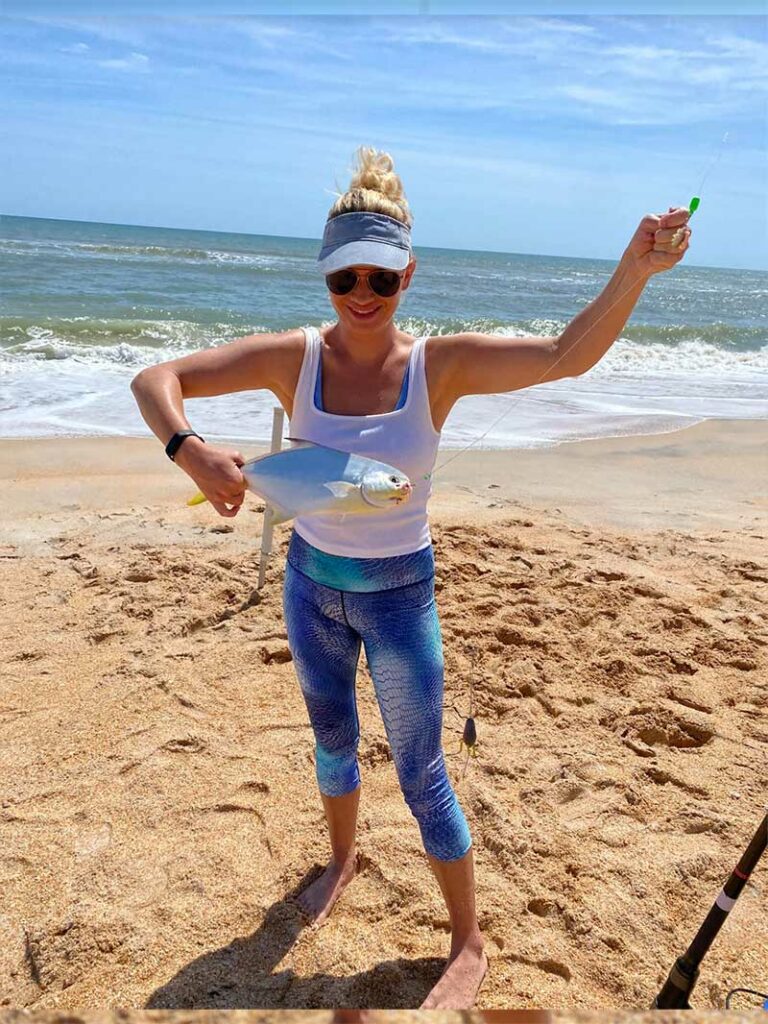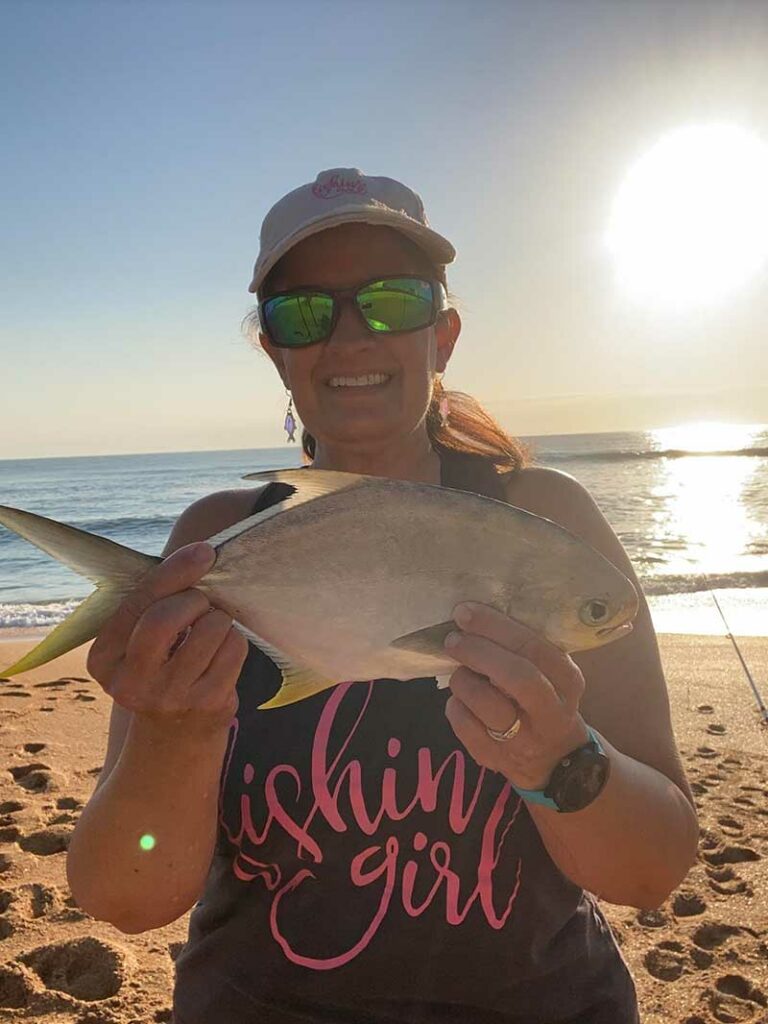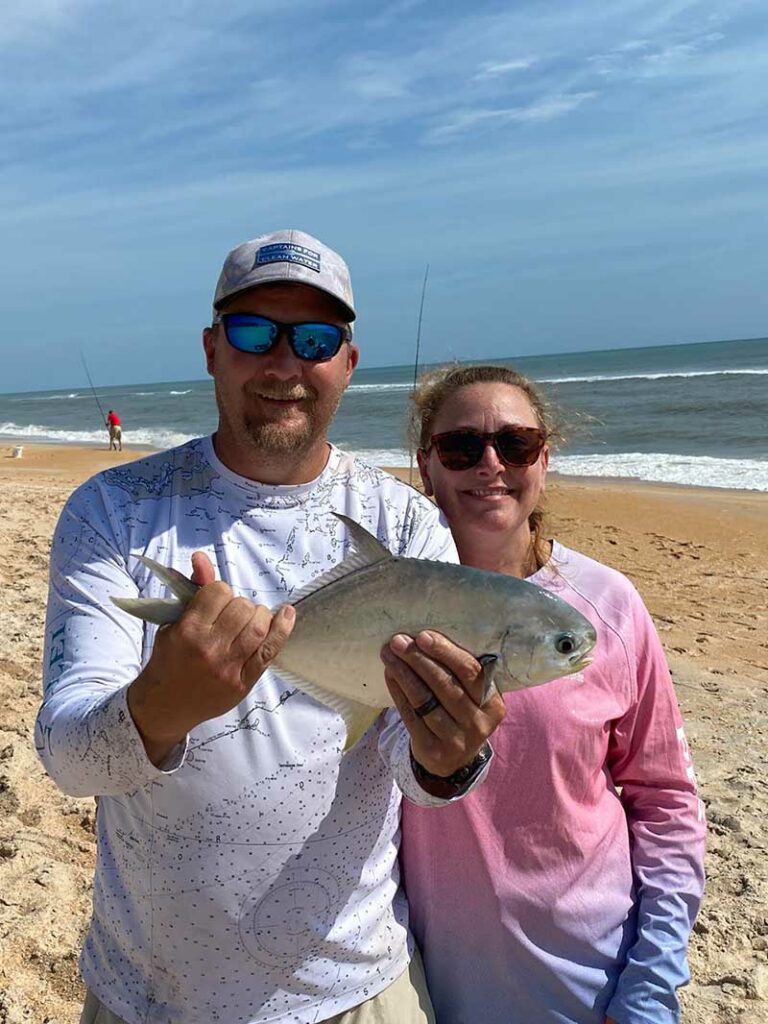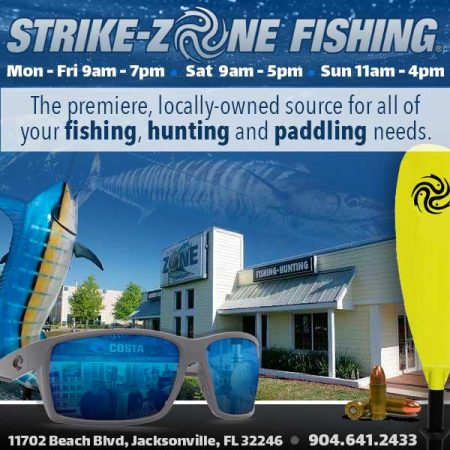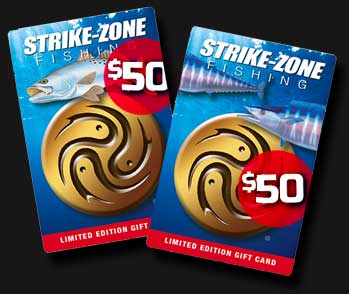- This topic is empty.
content-single-topic.php
-
AuthorPosts
-
-
loop-single-reply.php
April 28, 2024 at 8:06 pmThis report will be a little different from how I normally approach it. I recently spoke at a few fishing clubs about fishing for pompano in the spring, and I got great feedback that people learned a lot from what I shared, so because the spring pompano run is going on right now, most of this report will be geared specifically toward catching pompano. I shared some tips last time, but that was just the icing on the cake. Here is the cake itself!
Let’s get right to it!
The Most Important Thing: How to Read the Beach
When it comes to locating pompano, the most crucial structure that you need to be able to locate is the sandbar. The 90/10 rule is the same on the beach and the same for pompano. Most of the pompano I have caught have been between the shore and the top of the sandbar, so if you are able to fish at a beach where the sandbar is close, it could really benefit you. To be able to see the sandbar easier, have polarized sunglasses and look for the lighter colored water parallel to the beach.
If you have more than one line in the water, stagger them. Have one closer, within 30 yards of the wash (where the waves meet the sand and get all churned up), throw one in the middle to the back of the trough, and then put one right in front of the sandbar or on top of the sandbar if you can reach that far. Fishing on a high impact beach is great because the deep trough will hold fish no matter the tide.When looking for a place to fish for pompano, I am looking for rips or cuts, but even more, I am looking for whitewash. When you see a section where there is whitewash in front of the sandbar, it can be a good spot for catching pompano. Try to get your line into that whitewash area.
It can be helpful to fish an area where there is a nearby jetty or inlet. Pompano are schooling fish so when the school comes through the area, once they leave, they’re gone! If you are close to a place where there is a natural “barrier” that causes the school to turn around and go back the way they came, you just doubled your chances of hooking up on that same school.
Bait and Rigs for Pompano
There are some baits that are excellent for catching pompano and might increase your chances significantly. Fresh blue crab knuckles is an awesome bait. Cut the crab in half down the middle from the head to tail, peel off the top shell, pull off the legs, and use your scissors to cut between the leg segments, leaving some of that body meat. You can go right through the leg hole with the hook and I like to secure it on the hook with a small piece of bait like Fishgum. This keeps the bait smaller and very enticing!
Fresh dead or salted shrimp are also great options. You don’t need a very big piece because pompano have very small mouths. DO NOT use a whole shrimp. They won’t be able to get hooked! With any bait I use, I’m always securing it with a small piece (about the size of a fingernail) of Fishgum to not only keep the bait on, but to also release more scent into the water and attract fish.
Sand fleas are also a great natural bait for catching pompano. If you know how to look for them, you won’t need to spend top dollar at the bait shop to find them. Here’s a link to a video on my YouTube channel about how to find sand fleas when you are not seeing the colonies:
There are lots of rigs out there for pompano and everyone has their own methods and version that they use. Almost all of them have some sort of colored floats or beads. This is for many reasons:
- The floats keep the hooks buoyant and off the bottom. Pompano are not typically feeding directly on the bottom like whiting or catfish.
- Beads clack together and can mimic the sound of shrimp swimming in the water.
- The colors of floats help attract the fish depending on the water clarity. Use pink or orange colors for cleaner waters and green, chartreuse (yellow), or purples for dirty water. Read up on the science behind this—it’s fascinating!
- Our float hooks that I manufacture myself are engineered with the floats ON the hooks. Why? If you watch underwater footage of pompano feeding, many times they will suck in the floats before they suck in the bait on a traditional pompano rig that has the floats on the line above the hooks. They can get frustrated from not getting food and give up. We have gotten great feedback from anglers who have purchased our float rigs that they are having success with them, and they come back for more! Here is a link to our rigs in our store: https://fishin-girl.com/collections/rigs-and-tackle. While you’re there, pick up a few of our new sputniks with our branded colors made by Redfin Fishing!
Facts to Understand about Pompano
There are a few things about pompano that will be very helpful to you when you are fishing for them. I have alluded to a few of these already, but here we go:
- Pompano are schooling fish. Once you start catching them, you will want to immediately increase your chances to catch more while they are in the area. Once they are gone, they might not be back! So pay attention to the zone it was caught. Was it in front of the sandbar? On top? Near the shore? Put the rest of your lines in that zone as soon as possible. Take selfies with the fish later after the school passes. Get that line back in the same area quick!
- Pompano are sight feeders. Like I mentioned above, they are attracted to the floats and certain colors depending on the water clarity. Make sure you are matching the conditions and also “matching the hatch” with what bait they are feeding on that particular day. It might take a bit to figure out what that is. Use different baits on your lines until you see a pattern, then switch it all to that bait.
- Pompano have small mouths. Keep your bait small! Nuff said!
- Watch out for the spikes! There are 5 spikes right in front of their dorsal fin, and 2 right in front of the anal fin. And they are SHARP! Be careful taking them off the hook!
- Pompano are GREAT to eat! They are one of the best tasting fish and why it is so expensive to buy them in stores or restaurants. Make sure when you fillet them, you get their head meat too, it is some of the best meat on the whole fish!
- Know your regulations for pompano: Ours here in NE Florida: they have to measure at least 11” to the middle of the fork in the tail (referred to as fork length) and you can only keep 6 per day. Your regulations might be different so study up! I tend to only keep them if they are at least a half inch over the limit. They can shrink when in the cooler on ice, so be aware of that.
This information should help you out while out there fishing fort pompano. But information you read or watch on a screen can never replace that hands on training that you can get from a professional guide (like myself). For instance, it is easier to get a pompano on the line than it is to reel it in. There are many ways you can lose a pompano while reeling it in, and this type of knowledge is best learned in action; it can’t be replicated on paper or from watching a screen. If you are wanting to get a jumpstart on your surf-fishing knowledge, consider booking a surf-fishing charter with me. Visit http://www.fishin-girl.com or text/call 386-264-1587 to check availability or get more information. Our website has a lot of FAQs and all our pricing, as well as a video about what to expect on our charters. Let’s go fishing!
I hope this has been helpful and thanks for reading! Tight lines!
Cathy Sanders is the founder of Fishin' Girl, LLC and is dedicated to gathering women who love fishing and want to enjoy it together. Call to book a trip, or visit Fishin' Girl on the web.
To respond to this post, login or register here.
AuthorPostsViewing 0 reply threads
-

